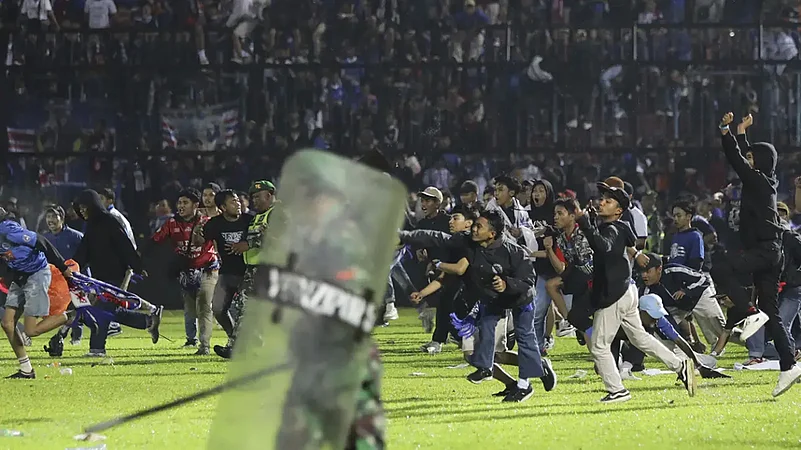The fan and police violence during the Arema FC vs Persebaya Surabaya encounter in Malang, Indonesia, on Saturday left at least 125 people dead, most of them trampled upon or suffocated. The violence broke out at Kanjuruhan Stadium when Arema FC lost 2-3 and some of the 42,000 home fans, known as ‘Aremania’, threw bottles and other objects at players and officials. (More Football News)
Witnesses described officers beating supporters with sticks and shields before shooting tear gas canisters directly into the crowds. That triggered panic and a stampede. It was among the deadliest disasters ever at a sporting event.
There is something about football that inflames passions. On the one hand, it lends the sport its magic. On the other, though, a football stadium is often a ticking time bomb, given the sheer number of people present and their heightened emotions.
Let’s take a look at some of the worst football disasters in history.
Heysel Stadium Disaster (May 1985)
Thirty-nine fans lost their lives and 600 were injured during the Juventus vs Liverpool Champions League final in 1985 at Heysel Stadium in Brussels. The incident happened before the start of the match when Juventus fans, trying to escape a breach from Liverpool supporters, were pressed against a collapsing wall. The game was played later on, with Juventus winning 1-0.
Accra Stadium Violence (May 2001)
Approximately 126 people died in a stampede during a Hearts of Oak vs Asante Kotoko football match at the Accra sports stadium in 2001 in May. Trouble began towards the end of the match. Seeing their team trailing 1-2, Asante Kotoko supporters started breaking chairs and throwing them on to the pitch. Police started firing tear gas, prompting the crowd to rush for exits in the 50,000-capacity stadium, resulting in over a hundred deaths and innumerable injuries.
Guatemala-Costa Rica Stampede (October 1996)
The World Cup qualifying match between Guatemala and Costa Rica in October 1996 will be remembered as a dark hour as at least 82 people died and 147 got injured in a stampede. According to reports, the stadium in Guatemala City, having a capacity of 45,000, was overloaded with fans. It was also reported that angry supporters kicked down an entrance door in the south stands, resulting in those at the front tumbling down. Guards opened security gates that led to the playing arena but could not stop the stampede.
Dasharath Stadium Disaster (March 1988)
Ninety-three people were killed and 100 more were injured during a 1988 Tribhuvan Challenge Shield football match between Janakpur Cigarette Factory and Bangladeshi side Liberation Army at the Dasharath Stadium in Kathmandu. The incident occurred when fans tried to flee from a hailstorm inside the stadium – the worst football disaster in Nepal. Since the stadium doors were locked, the crowd could not flee, resulting in the large number of fatalities.
Hillsborough Disaster (April 1989)
At least 97 people died while more than 700 were injured in the Hillsborough disaster in April 1989 during the FA Cup semifinal between Liverpool and Nottingham Forest. 10-year-old Jon-Paul Gilhooley, a cousin of former Liverpool and England great Steven Gerrard, was the youngest to lose his life. The tragedy was attributed mainly due to overcrowding.
Ellis Park Stadium Disaster (April 2001)
Forty-three people lost their lives during the Ellis Park Stadium disaster during a local Soweto derby between Kaizer Chiefs and Orlando Pirates in 2001. According to reports, around 30,000 fans tried to force entry into the sold-out 60,000-capacity Ellis Park Stadium, reportedly after an Orlando Pirates equaliser. That led to chaos and destruction.
Bradford Stadium Fire (May 1985)
Fifty-six people were killed and more than 250 injured when a fire broke out during a third division football match between Bradford City and Lincoln City in Britain in May 1985. Just before halftime, the first signs of a fire were noticed on block G by a television commentator. Within minutes, it engulfed the whole stand due to windy conditions. Many burnt to death while trying to escape, since the exit doors were closed.
















